Yellow chicken breeds are among the most common, with almost every coop having a couple of yellow hens. Besides being easy to maintain, they’re also known for their excellent egg production and beauty. So what are some of the popular types of yellow chicken breeds?
Here are some of the popular yellow chicken breeds:
- Buff Cochin
- Buff Brahma
- Buff Rock
- Black-Tailed Buff Japanese
- Buff Silkies
- Rhode Island Reds
- Buff Laced Polish
- Single Comb Buff Leghorns
- Buff Orpington
Yellow chickens are known for their impressive egg-producing qualities, good body size, and ease of maintenance. This article will shed more light on this breed, analyzing some of the most popular types and what they’re best for.
What Are Yellow Chicken Breeds?
Yellow chicken breeds are a variety of chickens that have characteristic brownish-yellow or gold feathering and are also referred to as buff chickens. Yellow chickens are known for their prolific egg-laying qualities and decent body meat content.
Related: Frizzle Chicken | Unexpected Wonders and Surprising Perks!
Below are some of the most popular yellow chicken breeds:
1. Buff Cochin
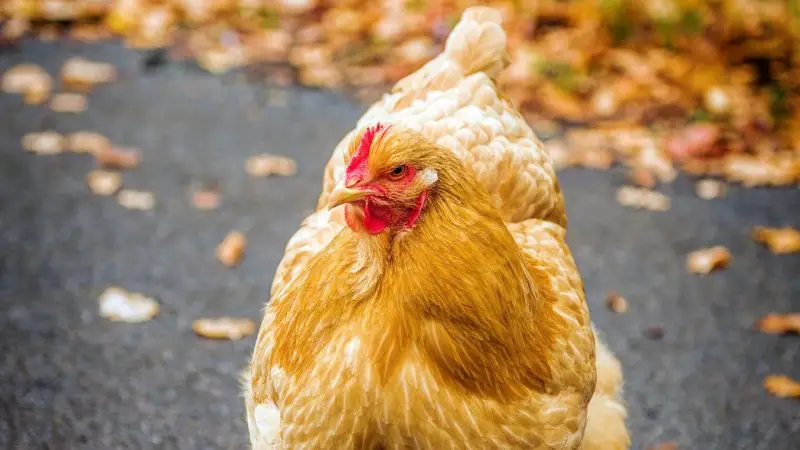
Cochin originated from China in 1845 and was initially referred to as the Chinese Shanghai Fowl. The cochins’ introduction to England made them hugely popular in what was referred to as the “Cochin craze.”
Male and female buff Cochins are usually large sized and are characterized by their soft, extra-long feathering. They’re not the most aggressive chicken breeds around, which means they can get along with other breeds in your coop.
Cochins have yellow skin and tend to lay eggs with brown shells. These breeds are relatively large sizes which make them ideal for meat production as well.
2. Buff Brahma
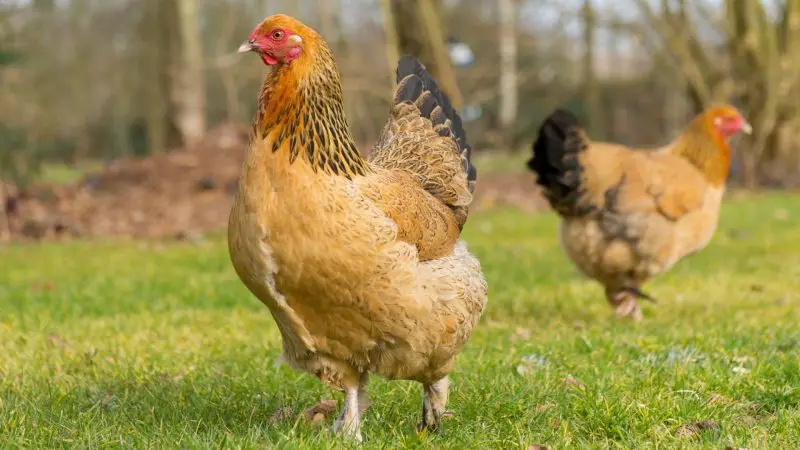
Brahmas are believed to be a cross between the Cochin and Malay breeds. Early farmers improved the original cochin stock to give the dark and light Brahmas, which led to the buff Brahmas.
This breed is known for its calm temperament and ease of handling, features that make it a favorite for exhibitions. Their feathers are beige or vibrant yellow, which adds to their aesthetic appeal.
Buff Brahmas lay light to dark-brown eggs and are known to cope well with winter weather.
However, they’re mainly kept for large meat production due to their attractive yellow skin color and significant body meat content. It’s also a great idea to keep this breed to boost your egg production during winter.
3. Buff Rock
Buff rock is one of the most popular chicken breeds and was initially exhibited as golden buffs. This breed is commonly known for its golden feathers and calm disposition, which makes it a breed to keep with other chickens in a coop.
Besides having yellow feathers, buff rocks also have yellow-colored legs and beaks. Their wattles and combs are red, while their feet do not have feathers. This breed usually weighs about 6 to 9 ½ lb (2.72 – 4.30 kg).
Buff rocks are usually kept for both their eggs and meat. The breed usually has yellow skin and has a significant meat content. They also produce eggs all year round and are known to have brown eggshells, with some variations being light or dark brown.
4. Black-Tailed Buff Japanese
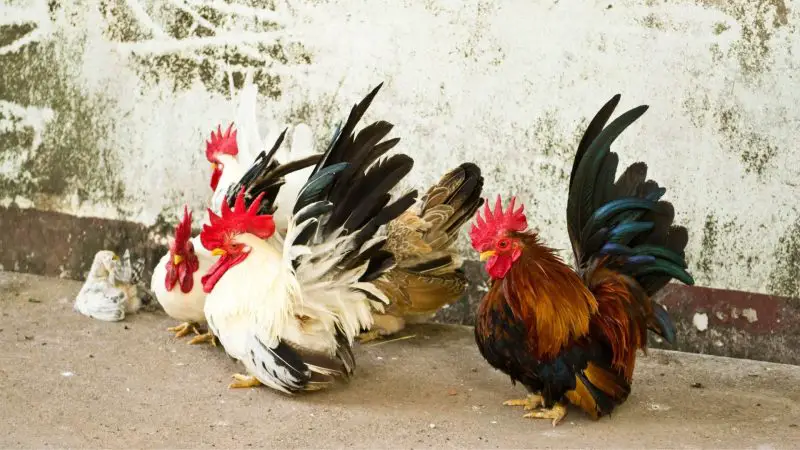
Black-tailed buffs have their origins in Japan and are known for their unique disproportionate size as they have a small body size, short legs, and large arched tail feathers that appear larger than the entire body that stretches all the way to the head.
They do make great pets and are even more appealing when kept with other breeds as a part of a larger flock. Though generally well-behaved, roosters of this breed are known to be more aggressive than hens.
This bantam yellow breed usually produces eggs with light brown shells. However, their looks, miniature size, and small egg size mean they are mostly kept as ornamental birds. They can still be kept for their meat, though they produce much smaller in size than other breeds.
5. Buff Silkies
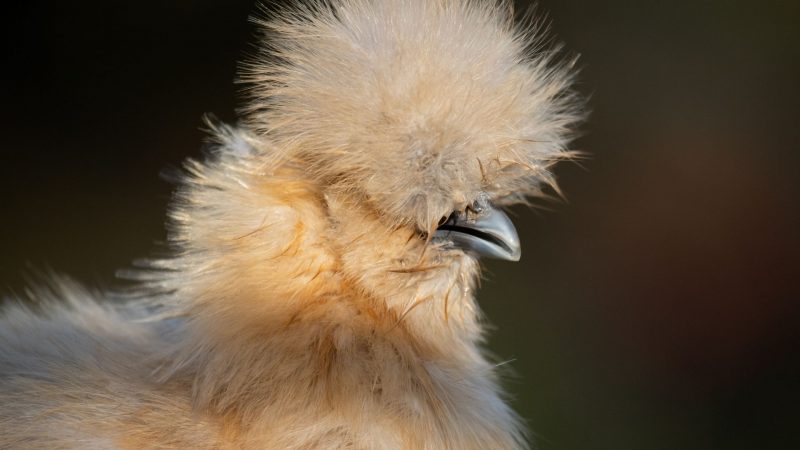
Early information on silkies traces the breed to ancient China, referred to as a fowl with hair instead of feathers. Buff silkies are prone to Marek’s Disease and must be well vaccinated to keep preventable diseases at bay.
Silkies have fluffy feathers that feel like silk or satin and are widely considered among the most beautiful chickens in the world. They also have dark blue bones and skin, blue earlobes, and five toes on each foot.
This breed of yellow chickens is mainly kept as ornamental birds as they’re not the best egg producers. Their body size and meat content is also small, with many consumers often finding their dark skin unattractive to eat.
You’ll also need to be extra careful when keeping silkies with other chicken breeds, especially the aggressive ones, as they tend to be easily bullied into submission. Silkies also make easy targets for predators, so you might want to modify your coop to make it safer for this attractive breed.
Related: What Is a Silkie Chicken? | Information and Facts
6. Rhode Island Reds
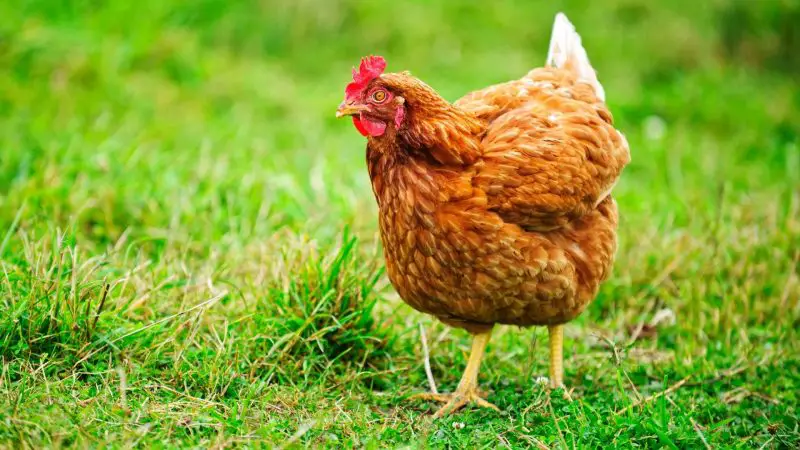
As the name suggests, the Rhode Island Red originates from Rhode Island. Breeders later crossed it with the Asiatic native stock, the Red Malay Game, and the Leghorn. These chickens are widely viewed as one of the best layers due to their impressive consistency.
Due to their mixed ancestry, some Rhode Island Reds have single combs while others either have rose or pea combs. They usually have yellow skin and tend to lay dark brown to brown eggs.
The Rhode Island Red is a dual-purpose breed known for its meat and egg production. Rhode Island Reds are mostly preferred as layers and can lay hundreds of eggs annually.
7. Buff Laced Polish
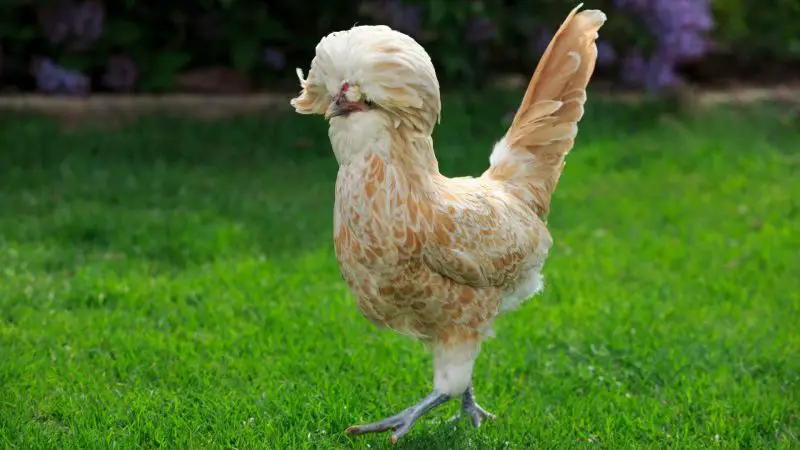
The buff laced Polish is known for its distinctive crest that, unfortunately, tends to impair its vision. The crest of this breed resembles the headgear worn by the Polish army, hence the origin of the name.
Buff laced Polish are docile and are known to have poor vision due to their long crest, which makes them easy targets for predators. This breed is among the rarest and shouldn’t be kept with aggressive and excessively large breeds.
Polish is mostly an ornamental fowl as its body meat content is lower than other breeds. And while this breed can lay approximately 200 tiny, white-shelled eggs a year, it’s not regarded as one of the best layers around.
8. Single Comb Buff Leghorns

Original leghorn breeds came from Italy, with their subvarieties bred in England, America, and Denmark. Leghorns are among the most common chicken breeds in America and are known for their egg-laying potential.
Buff leghorns have white earlobes, a red wattle with either a rose or a single comb. Their large wattles can be problematic during cold seasons as they are susceptible to frostbites. Leghorns are small compared to other fowl breeds and are known for being active and vigorous.
Leghorns can produce around 4 to 6 eggs a week and more than 280 eggs a year. They also tend to lay eggs for many years, making them ideal for egg production, with their eggs having white shells.
9. Buff Orpington
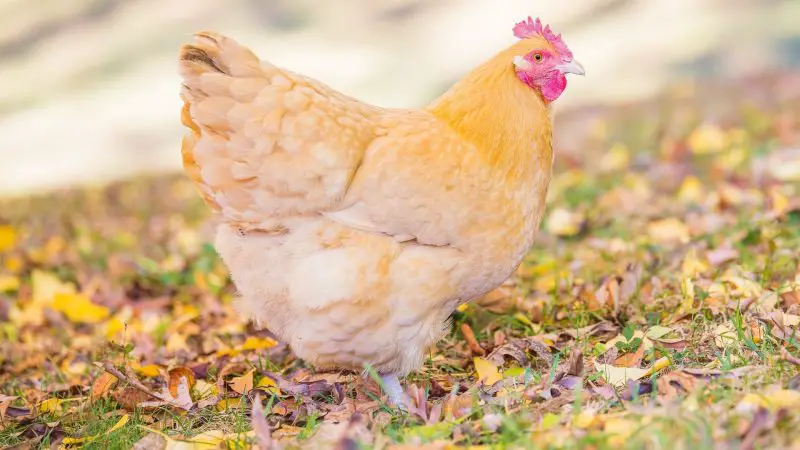
The buff Orpington came from Orpington, England, and was first produced as a cross of the Lansha, Plymouth Rock, and Minorca. This breed is popular for its calm demeanor and superb egg laying and meat production attributes.
Buff Orpingtons have enormous bodies and are characterized by their curvy shape and short backs. They have a calm temperament and are generally less noisy than other breeds. Their disposition makes them great pets to keep in urban farms or institutions.
The buff Orpington produces eggs with dark to light brown shells. They also have white skin, and their body meat content is high. This breed has a dual purpose as it’s kept for both its eggs and meat.
Related: What Kind of Chicken Do I Have? | Chicken Breeds
